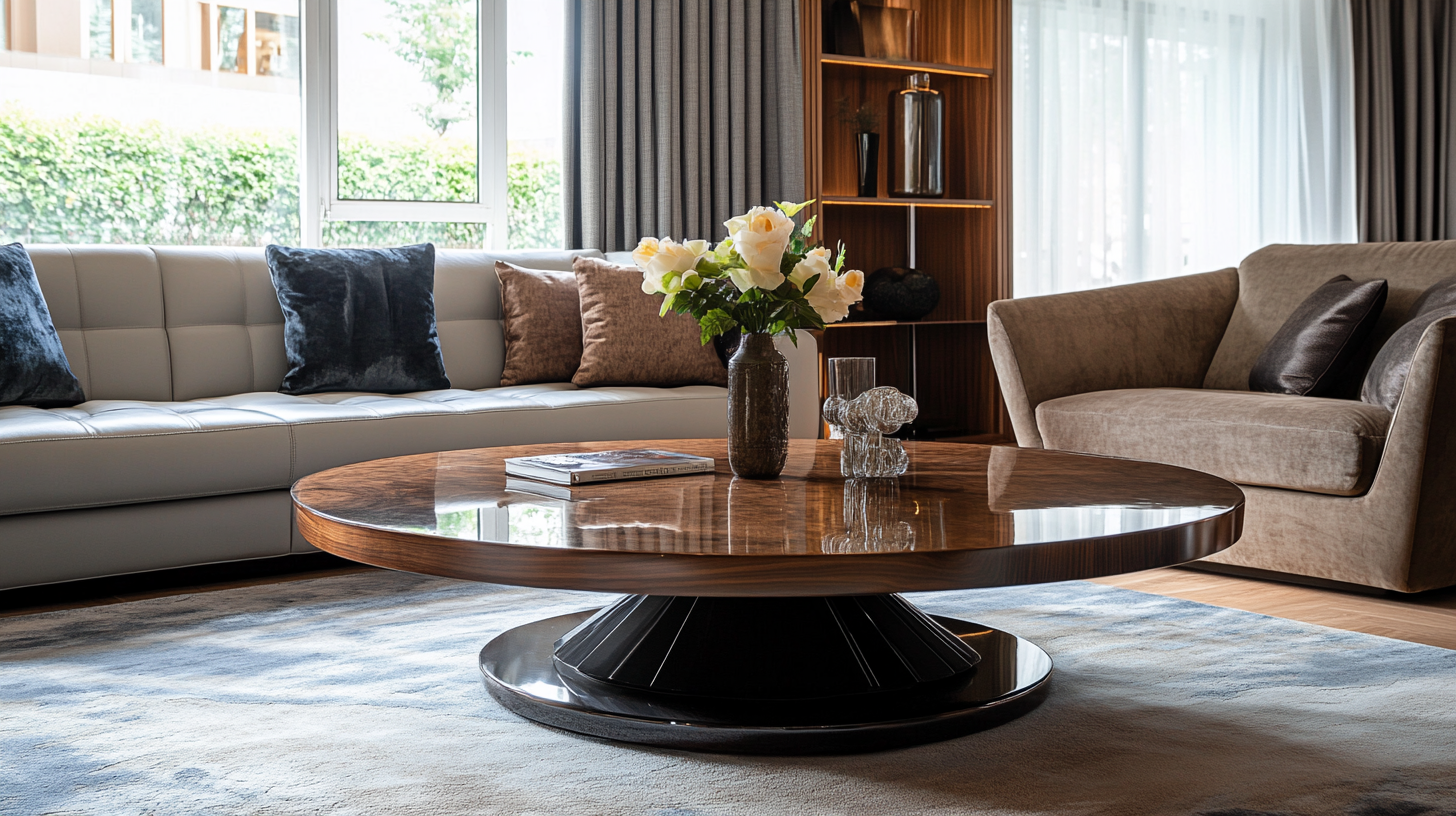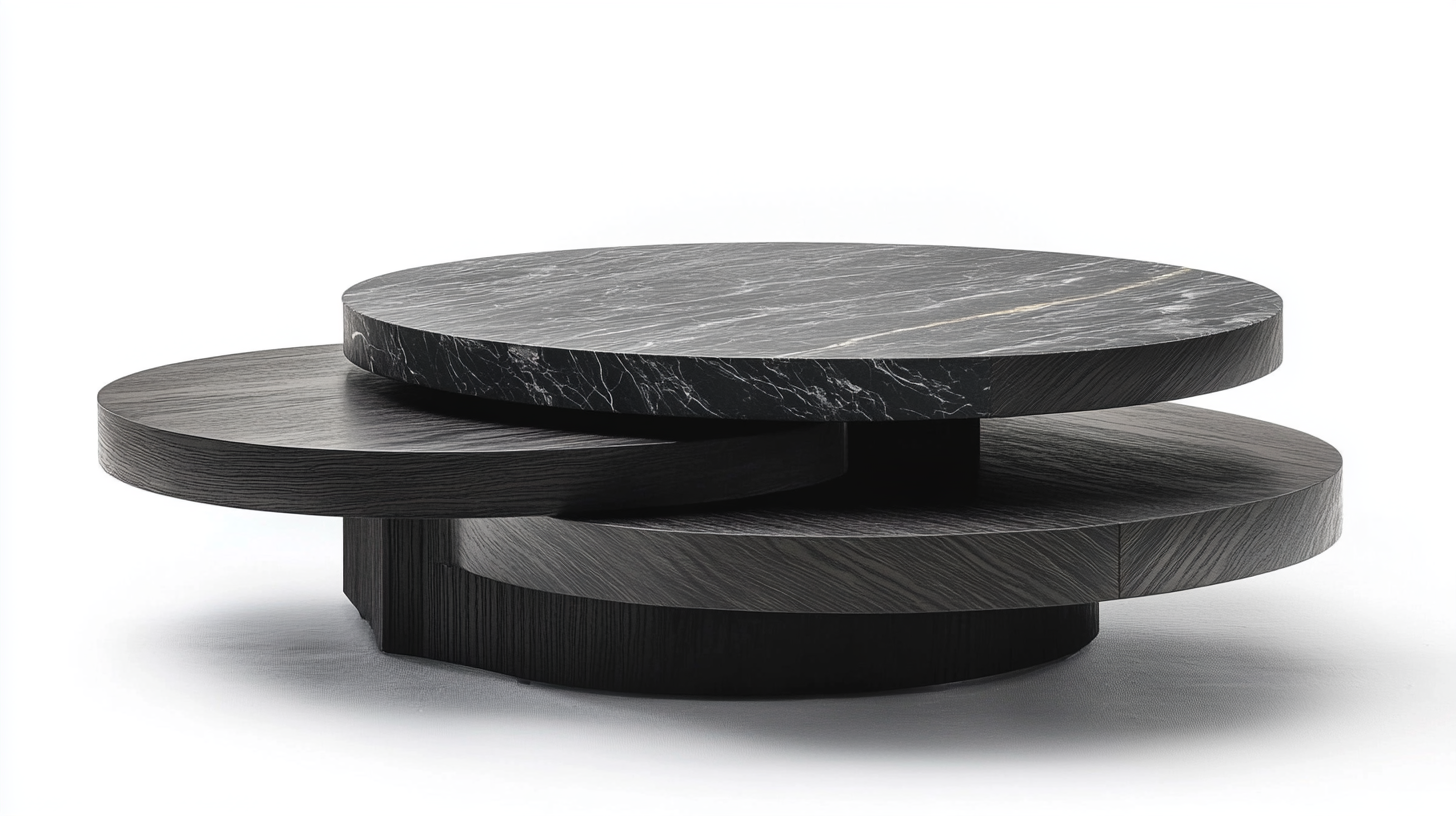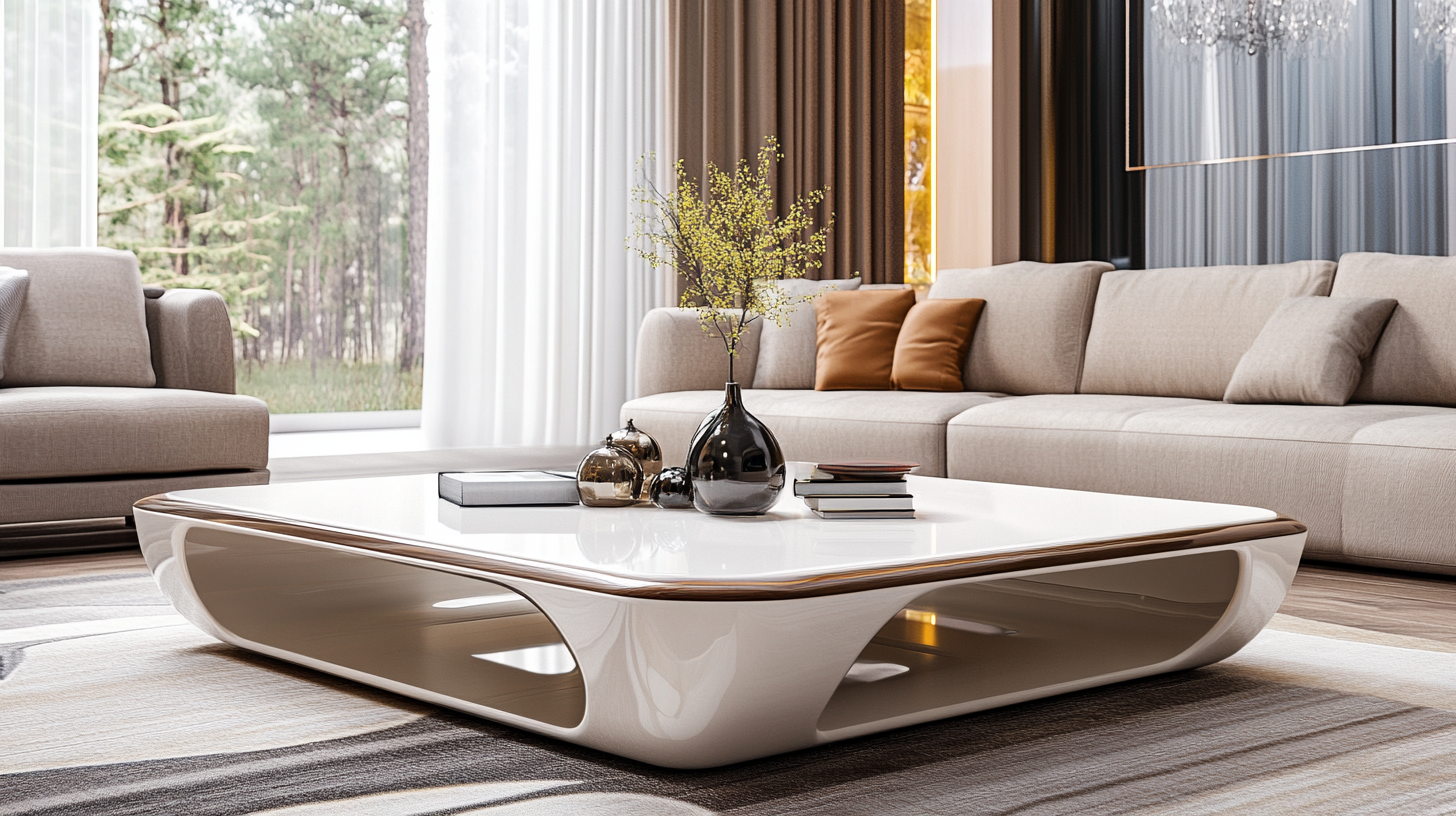In the ever-evolving landscape of global home furniture markets, sourcing the ideal Home Furniture Coffee Table has become increasingly critical for retailers and manufacturers looking to stay competitive. According to a recent report by Grand View Research, the global furniture market is projected to grow at a compound annual growth rate (CAGR) of 4.5%, reaching a value of over $650 billion by 2025. As consumer preferences shift towards versatile and aesthetically pleasing furniture solutions, coffee tables remain a central piece in living spaces, reflecting style and functionality. Understanding the nuances of sourcing these key items, from material selection to design trends, can significantly impact market success. In this blog, we will explore seven effective strategies for sourcing the best Home Furniture Coffee Table that caters to diverse global markets, ensuring businesses can meet consumer demand and maximize profitability.

When it comes to sourcing the best home furniture coffee tables for global markets, understanding design preferences is crucial. Different cultures have distinct tastes that influence their choice of coffee tables. For instance, Scandinavian minimalist designs are gaining popularity in various regions due to their functionality and aesthetic appeal. These styles typically feature clean lines, neutral colors, and natural materials, making them versatile and suitable for diverse interior themes.
Conversely, markets in Asia are leaning towards more ornate and traditional designs, often incorporating intricate woodwork and vibrant colors. This trend reflects a deep-rooted cultural appreciation for craftsmanship and artistry in home decor. Additionally, the rise of sustainable living has sparked interest in eco-friendly materials across the globe. Consumers are increasingly seeking coffee tables made from reclaimed wood or recycled materials, signaling a shift towards conscious consumerism that respects both style and the environment. By staying attuned to these evolving trends, businesses can ensure they meet the dynamic preferences of global customers while enhancing their product offerings.
| Strategy | Description | Market Trend | Design Preference | Key Materials |
|---|---|---|---|---|
| Research Local Preferences | Understand cultural influences on furniture design choices. | Growing interest in sustainable materials. | Natural and organic shapes. | Recycled woods, bamboo. |
| Utilize Online Marketplaces | Leverage e-commerce platforms to gauge customer demand. | Shift towards minimalist designs. | Simple lines and low profiles. | Metal, glass, and composite materials. |
| Attend Trade Shows | Network and discover new design innovations. | Interest in multifunctional furniture. | Coffee tables with storage solutions. | Wood and leather. |
| Collaborate with Local Designers | Incorporate regional styles and trends into designs. | Adoption of bright, bold colors. | Eclectic and vibrant aesthetics. | Varnished woods, finishes. |
| Analyze Social Media Trends | Track popular styles through influencers and user-generated content. | Rise of vintage and retro looks. | Characterful and nostalgic designs. | Reclaimed wood, aged metals. |
| Seek Feedback after Launch | Gather customer insights to adjust product lines. | Increasing demand for personalized items. | Customization options for coffee tables. | Variety of finishes and sizes. |
| Adapt Designs for Global Market | Tailor products to fit diverse geographic needs. | Focus on space-saving designs. | Compact coffee tables for small spaces. | Lightweight materials, foldable designs. |
Cultural influences play a pivotal role in the selection of home furniture, particularly coffee tables, which are often central to both functionality and aesthetics. Different regions have unique traditions, customs, and preferences that affect their furniture choices. For example, in Scandinavian countries, minimalism is highly valued; coffee tables are often sleek, functional, and crafted from natural materials, reflecting a design ethos that prioritizes simplicity and sustainability. In contrast, many Mediterranean cultures might prefer more ornate designs, with vibrant colors and intricate patterns that reflect their rich heritage and emphasis on social gatherings.
Furthermore, cultural practices surrounding gatherings and family life influence coffee table design. In many Asian cultures, low coffee tables are favored, paired with floor seating, which facilitates a communal dining and social experience. On the other hand, American households may opt for larger, elevated coffee tables that serve dual purposes—both as a decorative centerpiece and a functional space for snacks and drinks during family gatherings. Understanding these cultural nuances is essential for designers and retailers aiming to source the best coffee tables that resonate with diverse global markets, allowing them to cater to the distinct tastes and needs of consumers across different regions.

As the global market for home furniture, particularly coffee tables, expands, the emphasis on material quality and sustainability becomes increasingly pivotal. According to recent findings from the Sustainable1 Solutions initiative, there's a rising demand for transparency regarding the materials used in production. Consumers and businesses alike are beginning to recognize sustainability not just as an ethical choice but as a crucial factor in financial viability. The research outlines a developing consensus that prioritizing safer materials can mitigate potential financial risks associated with environmental degradation.
In evaluating potential materials for coffee table production, it's essential to consider both sustainability and the health impacts on consumers. For instance, a systematic review highlighted the prevalence of heavy metals in culinary herbs and spices from global markets, raising concerns over contamination. This underscores the importance of using non-toxic, sustainable materials in furniture design to ensure consumer safety. Furthermore, the environmental assessment of innovative designs, like green walls, has shown significant benefits in urban settings, reinforcing the potential for furniture to contribute positively to its environment.
As companies adopt a circular economy approach, assessing the sustainability of materials becomes increasingly critical. This involves implementing tools that gauge not only the environmental impact but also the life-cycle of materials used, as seen with the latest advancements in biomass-based energy supply chains. Integrating these sustainability assessments into sourcing strategies for coffee tables can ensure compliance with global market demands while fostering a more eco-conscious consumer base.

In today's digital age, e-commerce platforms have revolutionized the way retailers source home furniture, including coffee tables, for global markets. By leveraging online marketplaces such as Alibaba, Amazon, and eBay, businesses can tap into a vast array of suppliers and manufacturers from different regions, enabling them to compare quality, price, and design effortlessly. This online accessibility not only accelerates the sourcing process but also opens up opportunities to discover trending styles and materials that cater to diverse customer preferences across various markets.
Utilizing e-commerce platforms also allows for a more interactive approach to sourcing. Retailers can engage directly with manufacturers, facilitating better communication and negotiation on pricing and logistics. Additionally, many e-commerce sites offer extensive customer reviews and ratings, providing insight into product performance and supplier reliability. Retailers can use this valuable feedback to make informed decisions, selecting coffee tables that meet both quality standards and aesthetic appeal. By embracing e-commerce for product sourcing, businesses position themselves strategically to stay competitive in the ever-evolving furniture market.
Establishing robust relationships with international furniture manufacturers is crucial for sourcing the best home furniture coffee tables, particularly in today's competitive global market. Engaging with key suppliers not only helps in curating a diverse and quality product lineup but also enhances the overall shopping experience for consumers. Vendors who value long-term partnerships can offer insights into market trends and preferences, ensuring that businesses stay ahead of the curve.
In recent years, the furniture industry has witnessed a significant shift, with many manufacturers relocating operations closer to key markets. This move, as seen with some Chinese firms setting up in Mexico, allows for more efficient supply chains and quicker access to end consumers. Additionally, participating in international fairs, such as the China International Furniture Fair, presents businesses with opportunities to meet potential suppliers, explore innovative designs, and foster collaborations that can ultimately lead to increased profitability. Overall, strategic partnerships with international manufacturers not only streamline sourcing processes but also create avenues for mutual growth in a rapidly evolving market.
